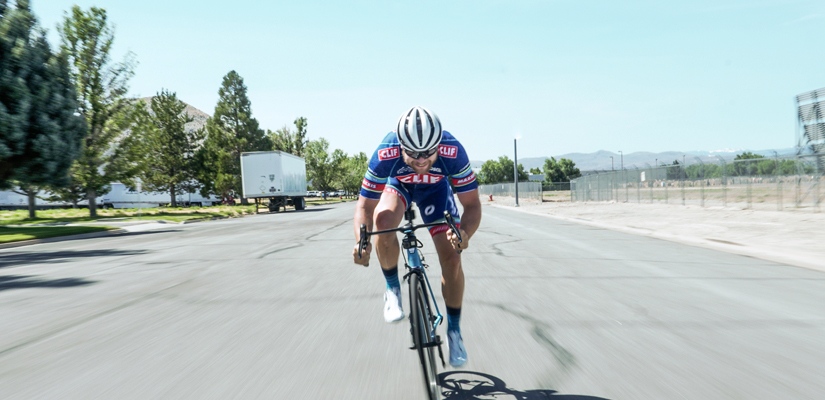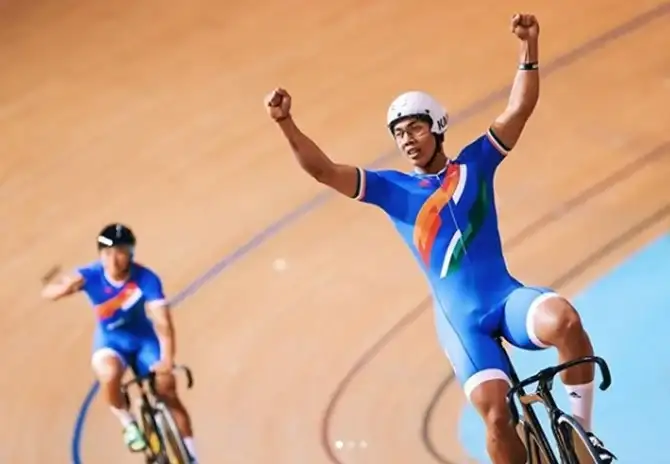As the Paris 2024 Olympics draw near, the spotlight shines on track cycling—a thrilling event that combines high-speed sprints, strategic racing, and athletic prowess. Track cycling features athletes competing on a banked oval track, where they showcase their speed, strength, and tactical intelligence. The unique combination of individual and team events offers a captivating spectacle for fans and participants alike.
The Essence of Track Cycling
Track cycling encompasses several disciplines, each with its own set of rules, strategies, and techniques. The main events include the sprint, team sprint, keirin, pursuit, omnium, and madison. Each event requires a different skill set, from raw speed and explosive power to endurance and strategic acumen.

-
Sprint: In the individual sprint, riders compete head-to-head in a short race, often involving tactical mind games as they jockey for position before unleashing their speed in the final stretch.
-
Team Sprint: Teams of three riders work together to maximize their speed, with one rider leading the pack before peeling off, allowing the next rider to take the lead. Timing and coordination are essential for success.
-
Keirin: In this event, riders start behind a motorized pacer that gradually increases speed. As the pacer pulls off, cyclists sprint to the finish, making it a thrilling race of strategy and speed.

-
Pursuit: In the individual pursuit, two riders start on opposite sides of the track and race to catch each other. This event tests both endurance and pacing strategies.
-
Omnium: A multi-event competition that combines various races, including scratch races, tempo races, elimination races, and individual pursuits, requiring versatility and tactical planning.
-
Madison: A team event that involves pairs of riders taking turns racing and relaying, allowing for dynamic exchanges and strategic positioning.
The Olympic History of Track Cycling
Track cycling has a storied Olympic history, with its debut at the first modern Olympics in 1896. Over the years, the sport has evolved, showcasing a range of events that highlight the skills and strengths of the athletes. The Union Cycliste Internationale (UCI) governs international track cycling competitions, establishing rules and regulations to ensure fair play and safety.
At the Paris 2024 Olympics, track cycling will continue to capture the imaginations of spectators, as athletes compete for medals in various events. The competition promises to be fierce, with elite cyclists from around the world showcasing their talent and determination.

Training and Preparation for Athletes
Preparation for the Paris 2024 Olympics demands a rigorous training regimen tailored to the specific demands of track cycling. Athletes engage in a multifaceted approach to training that includes:
-
Speed and Power Training: Cyclists focus on explosive starts and sprinting techniques, incorporating interval training and resistance exercises to develop the fast-twitch muscle fibers essential for high-speed performance.
-
Endurance and Aerobic Conditioning: Longer rides and interval training sessions build aerobic capacity, enabling athletes to maintain speed over longer distances, particularly in events like the pursuit and omnium.
-
Tactical Training: Understanding race strategies and tactics is crucial for success in track cycling. Athletes participate in simulations of race scenarios to develop their decision-making skills and teamwork dynamics.
-
Technical Skills: Mastering bike handling, cornering, and position on the track is vital. Cyclists regularly practice their techniques to ensure optimal performance during competition.
-
Mental Preparation: Mental toughness and focus are essential for competing at the Olympic level. Athletes often work with sports psychologists to develop strategies for coping with pressure and enhancing performance under stress.
The Thrill of Competition

The excitement of track cycling lies in its high-speed action and tactical intrigue. Races are often won or lost in the final moments, with athletes employing strategies to outmaneuver their opponents. The atmosphere in the velodrome is electric, with fans cheering as riders push their limits, demonstrating the power and precision required to excel in the sport.
Key elements that contribute to the thrill of track cycling include:
-
Speed: Riders reach incredible velocities, often exceeding 70 km/h (approximately 43 mph) in sprint events. The sheer speed of the competition creates an exhilarating experience for both participants and spectators.

-
Tactics: The strategic element of racing adds depth to the competition. Riders must assess their opponents' strengths and weaknesses, deciding when to make their move or conserve energy for a final sprint.
-
Team Dynamics: In team events, the interplay between teammates is crucial. Effective communication and coordination can mean the difference between victory and defeat, making teamwork an essential aspect of the sport.
The Role of Technology in Track Cycling
Technology plays a vital role in the evolution of track cycling, enhancing performance and safety for athletes. Key technological advancements include:

-
Bike Design: Modern track bicycles are engineered for optimal aerodynamics and performance. Lightweight materials, such as carbon fiber, reduce weight while maintaining strength, enabling cyclists to achieve higher speeds.
-
Aerodynamics: Innovations in helmet and clothing design, including skin suits and aerodynamic helmets, minimize drag, allowing athletes to cut through the air more efficiently.
-
Performance Analysis: Cyclists utilize data analytics and performance monitoring tools to track their progress, refine their training, and optimize race strategies. Coaches analyze data from power meters, heart rate monitors, and video footage to improve performance.

The Cultural Impact of Track Cycling
Track cycling has a vibrant community that celebrates the sport's rich history and promotes inclusivity. Events often draw enthusiastic crowds, fostering a sense of camaraderie among fans and athletes alike. The sport encourages participation at all levels, with clubs and organizations dedicated to nurturing talent and promoting cycling culture.
Youth programs and grassroots initiatives play a vital role in introducing young athletes to track cycling. These programs emphasize skill development, teamwork, and sportsmanship, helping to cultivate the next generation of cyclists.

The Future of Track Cycling
The Paris 2024 Olympics will provide a significant platform for track cycling, showcasing the talents of elite athletes while inspiring future generations to take up the sport. The Olympic exposure will likely lead to increased participation and interest in track cycling worldwide.
As the sport evolves, continued efforts to promote diversity and inclusion will be essential. Initiatives aimed at expanding access to cycling facilities and programs will help ensure that track cycling remains a vibrant and diverse activity.

Conclusion
Track cycling at the Paris 2024 Olympics promises to be a thrilling spectacle, showcasing the speed, strategy, and skill of some of the world's best cyclists. With its blend of individual and team events, the competition will highlight the athletes' dedication and passion for the sport.
As they race for Olympic glory, track cyclists will embody the spirit of competition and sportsmanship that defines the Games. Fans can expect a captivating experience filled with high-speed sprints and tactical racing, making track cycling a must-watch event at Paris 2024. With its rich history, innovative advancements, and cultural significance, track cycling stands out as a remarkable discipline within the Olympic program, celebrating the athleticism and artistry that define the sport.








